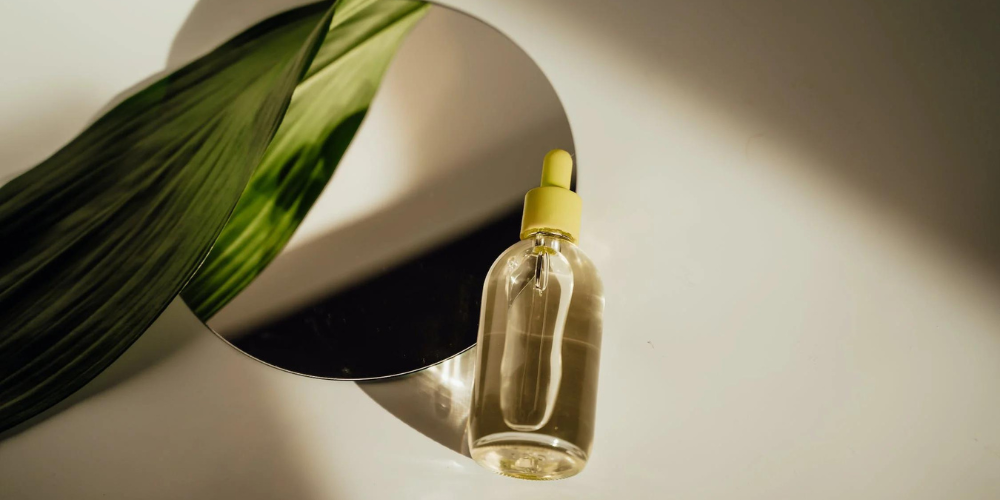Ingredient Breakdown: Plant-Based Ceramides

Beauty products containing plant-based ceramides are becoming increasingly popular. But what are they, and do they really work? In this blog post, we’ll take a closer look at plant-based ceramides and their potential benefits for your skin.
What Are Ceramides?
Ceramides are a type of lipid that occurs naturally in the skin. They help to maintain the skin’s barrier function and protect against moisture loss. Ceramides are also thought to play a role in wound healing and skin repair.
There are several types of ceramides, but the most common ones are known as ceramide 1 and ceramide 3. Ceramide 1 is found in high concentrations in the outermost layers of the skin, while ceramide 3 is more plentiful in the lower layers.
What Are Plant-Based Ceramides?
Plant-based ceramides, or phytoceramides, are derived, such as rice, wheat, and soy. They are similar in structure to the ceramides found in the skin, and they are thought to provide many of the same benefits.
These powerful lipids are believed to help restore the skin barrier, improve hydration, and protect against environmental damage. They are also thought to have anti-inflammatory and antioxidant properties.

What are the benefits of plant-based ceramides?
There are a few potential benefits of using plant-based ceramides in beauty products, with the main benefits being that they:
- are vegan and cruelty-free
- they enhance skin cell health
- block the escape of moisture from the skin
- protect skin from bacteria, fungi and environmental damage
- have anti-aging properties
Are phytoceramides good for the skin?
There is some evidence to suggest that plant-based ceramides may be beneficial for the skin. In one study, for example, participants who applied a cream containing plant-based ceramides to their face twice daily for eight weeks experienced improvements in skin hydration and barrier function.
Another study found that a phytoceramide-containing lotion was effective in reducing the symptoms of eczema, including itching, redness, and dryness
Are Phytoceramides Safe to Use?
Phytoceramides are generally considered to be safe for most people. However, as with any new beauty product, it’s always a good idea to do a patch test before using it on your entire face.

What is the Best Source of Natural Ceramides?
If you’re looking for a source of natural ceramides, look no further than your kitchen! Rice, wheat, and soybeans are all excellent sources of plant-based ceramides.
When combined with fatty acids, they strengthen each other and become more “biocompatible.” Perfect examples of this property can be found in natural oils like jojoba, safflower, grapeseed and poppy seed oils which all contain 70% or more ceramides.
Are Synthetic Ceramides Better Than Natural Ceramides?
There is no evidence that suggests that one is better than the other. In fact, many ‘natural’ or ‘organic’ products will use synthetic ingredients, as they are more stable and effective in smaller concentrations.
Can You Really Get the Benefits of Ceramides from a Cream?
Products with ceramides have been shown to improve the levels of ceramides in the skin. Ceramide is beneficial to the skin, even in small amounts. In fact, a Japanese study showed an increase in skin moisture content of more than 100 percent with ceramide use.
Most professionals agree that there is nothing but good reviews about the effects of cermide-containing beauty products, no matter where they end up in your beauty routine. So don’t be shy to use them on your face, body, lips, and hair whenever and wherever!

Can Phytoceremides Help Heal Eczema or Psoriasis?
There are many anecdotal reports that phytoceramides can help heal certain skin conditions. One study found that a plant-based ceramide-containing lotion was effective in reducing the symptoms of eczema, including itching, redness, and dryness. Ceramides are also thought to be helpful in treating psoriasis and atopic dermatitis. More research is needed to confirm these effects.
Which Skin Type Benefits Most from Ceramide?
Because ceramides naturally occur in the skin, they are ideal for all skin types. Your skin can benefit from ceramide-containing products whether it is acne-prone or too dry.
How Can I Tell if My Beauty Products Contain Ceramides?
Check the ingredient list on your beauty products. If you see any of the following words, chances are your product contains ceramides:
Ceramide AP, Ceramide EOP, Ceramide NP, Ceramide EOS, Cetearyl Alcohol, Cetearyl Glucoside, Phytosphingosine
To make searching for products with these ingredients easier, use the Think Dirty App’s Search by Ingredient premium feature and find products containing phytoceramides in a jiffy.
Disclosure: We are a professional review and product rating website and mobile app that receives compensation from the companies whose products we review and rate. We are independently owned and the opinions expressed here are our own interpretations of a trusted source.
Ingredient Breakdown — Plant-Based Ceramides was originally published in Think Dirty on Medium, where people are continuing the conversation by highlighting and responding to this story.